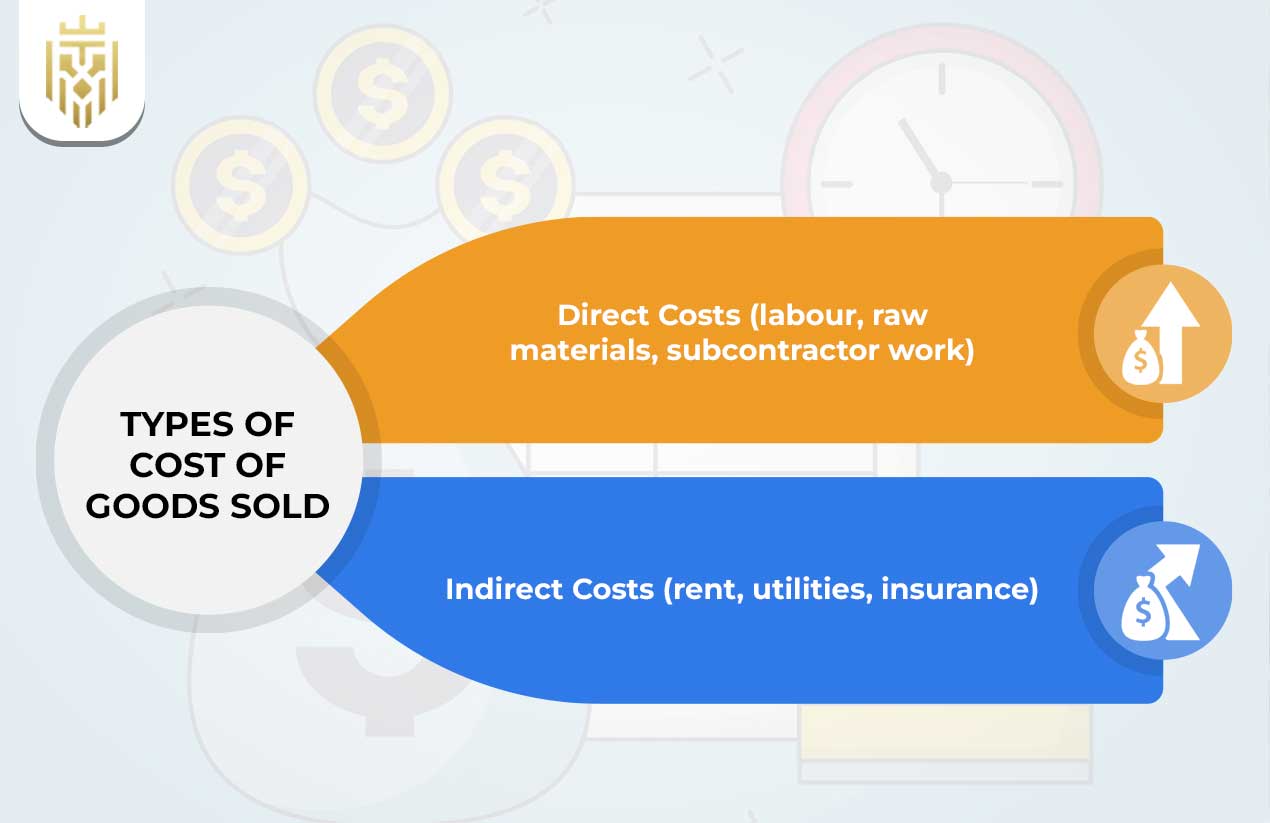What is the Cost of Goods Sold?
Cost of goods sold meaning lies in its role as the total cost incurred in producing or purchasing goods that a company sells. This metric directly affects profitability and operational decisions. Businesses often ask what is cost of goods sold, when analysing their financial health and its impact on gross profit and revenue.
What is Included in the Cost of Goods Sold?
Understanding how to calculate cost of goods sold involves identifying direct costs like raw materials, labour, and freight. It excludes office expenses and marketing costs, focusing strictly on production. Companies also track Economic Order Quantity (EOQ) and Reorder Quantity (ROQ) to optimize inventory-related direct expenses impacting COGS.
What’s the difference between the Cost of Goods Sold and the Cost of Sales?
The Cost of Goods Sold meaning relates to direct production costs, while cost of sales includes overheads like rent and utilities. Only COGS qualifies as a tax-deductible expense. Differentiating these terms helps businesses analyse Inventory Accounting efficiency and its impact on gross profitability.

What is the Cost of Goods Sold Formula?
The cost of goods sold formula is: COGS = Beginning Inventory + Purchases − Ending Inventory. This highlights how to calculate the cost of goods sold accurately for budgeting. Coupled with insights from Inventory Audit, businesses can refine their cost management and operational strategies to improve financial performance.
Types of Cost of Goods Sold:
COGS includes Direct Costs (labour, raw materials, subcontractor work) essential for production and Indirect Costs (rent, utilities, insurance) supporting production indirectly. These categories help businesses allocate resources and manage expenses effectively.

Direct COGS:
Direct COGS includes labour, materials, and subcontractor work crucial for creating a product or service. Businesses use dimensional weight calculations to manage raw material shipping costs within this category. By efficiently handling direct expenses, companies maintain cost-effectiveness and competitive pricing.
Indirect COGS:
Indirect COGS, like rent, utilities, and insurance, supports production but isn’t tied to specific goods. Distinguishing between Inventory Accounting for direct and indirect costs helps refine operational efficiency. Managing these fixed expenses is critical to optimising overall production costs without directly affecting goods’ market price.
Significance of Cost of Goods Sold:
COGS impacts profitability, tax reporting, and financial health. It aids inventory management by determining costs, identifying deductions, and improving budgeting. Analysing COGS ensures operational efficiency and supports strategic business decisions.
Profitability:
Inventory Audit and profitability depends on COGS, which directly reduces revenue to calculate gross profit. Better cost control shows up as lower COGS, and inefficiency is indicated by rising costs but without sales growth. Inventory Accounting is effective which allows businesses to have visibility on costs and profitability and identify the inefficiencies and streamline production processes that are of tremendous benefit in the long run.
Tax Reporting:
COGS is a deductible expense that can lower taxable income, and is important to small businesses seeking to optimize Economic Order Quantity. To calculate the COGS correctly, the direct expenses and Dimensional Weight for freight cost adjustments need to be kept in records diligently, and use them in a way that is compliant and cost-efficient. Documentation and monitoring further increase tax benefits and minimize regulatory risks for organizations.
Financial Health:
COGS tells you how efficient a business is in running itself and how much it controls costs. Combining COGS metrics with inventory audit data allows for a more accurate view of profitability, and allows for forecasting of future expenses, to influence strategic decisions. COGS trends can be tracked for improved budget allocation, better cost allocation and better decision-making for long term growth.
Inventory Management:
COGS analysis is used by businesses to figure out item costs, to forecast demand and to manage inventory well. By combining Reorder Quantity and Economic Order Quantity, companies minimize stock levels and holding costs, while maximising operational efficiency and long term sustainability. Precise COGS tracking also minimises waste and maintains a reliable product supply to meet the customer demand.
How do you Analyse the Cost of Goods Sold?
COGS analysis uses the cost of goods sold formula and some other forecasting techniques such as average cost and margin forecasting. To manage inventory, it’s important to know how to calculate the cost of goods sold. Inventory Audit improves accuracy and supplies actionable insights for financial planning.

FAQs
1. What is the Cost of Goods Sold?
The Cost of Goods Sold (COGS) is the combined cost of producing or purchasing the goods that a company sells, including direct costs of raw materials and labour. It can be said to be a reflection of the profitability and financial performance of the business.
2. What are the types of Costs for Goods Sold?
Direct Costs (labour, raw materials, manufacturing supplies) and Indirect Costs (rent, utilities, insurance) tied to production, but not to goods. These costs affect inventory management and operational efficiency.
3. What’s the difference between the cost of goods sold and the cost of sales?
Direct production costs are materials used and labour are included in COGS. Direct and indirect costs are included under cost of sales, including rent and marketing. Cost of sales is seldom tax deductable; COGS is.
4. How do you Analyse the Cost of Goods Sold?
Use the cost of goods sold formula (Beginning Inventory + Purchases − Ending Inventory) to analyse COGS and the average cost methods and margin forecasting. It guarantees proper budgeting, cost control, and financial planning.







